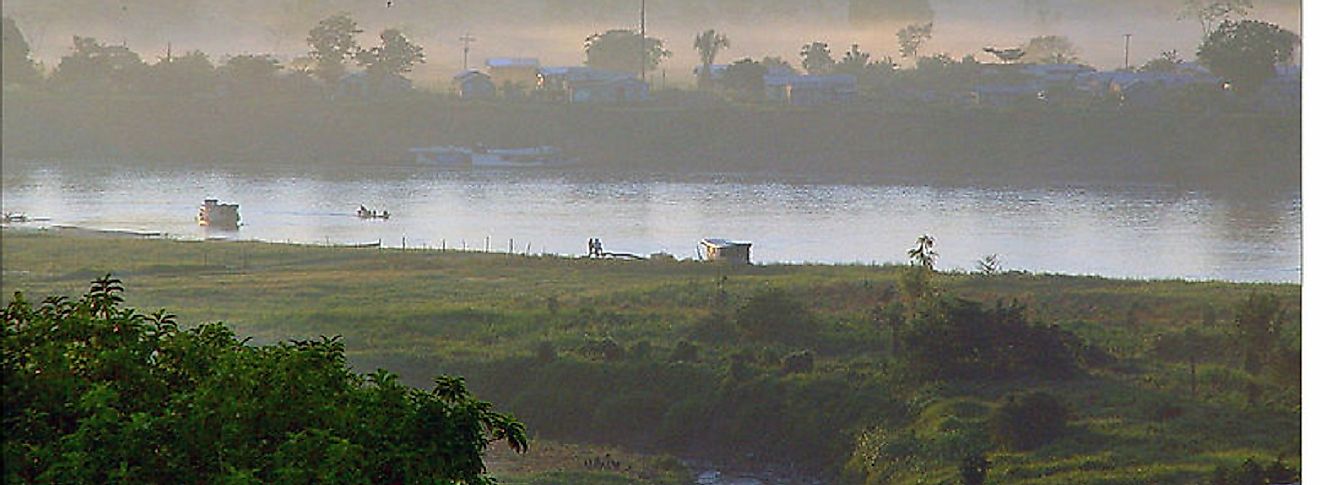The Juruá (Yuruá) River Of South America

5. Description
The Juruá River, or Rio Yuruá, is one of the largest, most navigable, and most economically important rivers in Brazil and Peru, and in all of South America for that matter. The river arises in the east out from the Ucayali Highlands of Peru, and flows for 1,133 miles free of any natural obstruction, and relatively easily navigable up to where it joins the Amazon River. It is situated to the west of the Purus River, and meets the southern part of the Amazon River. The Jurua River shares many similar attributes with the Purus River. It has a slow current flow that winds its way along the many flooded areas of forested land until it reaches the Solimoes River in Brazil.
4. Historical Role
The early Portuguese explorers first discovered the river and gave it the name Jurua. The river meanders its way through floodplains and forested areas with a biodiversity of flora and fauna that is quite incomparable. The river was always a waterway for communities that live in the upper reaches of Brazil. These communities subsisted on the river and its flooded forests since the earliest human settlements along the river, first established itself. Despite early attempts at logging and commercial fishing, the Jurua retains much of its biodiversity. The forests are intact with its habitats and biodiversity remaining viable in the protected areas, compared to the areas that are near towns and cities.
3. Modern Significance
The Brazilian Jurua River and its flooded plains forests are sources of livelihood and subsistence for the Brazilian indigenous communities that live in and around its vicinity. Agriculture, fishing, logging, and construction are the main economic activities in the area. The Jurua River is also a tributary of the great Amazon River where hydroelectric power dams are located. These hydroelectric dams power several cities along the Amazon River. There are government plans to build 80 more dams on the many tributary rivers of the Amazon, and these dam projects will bring electricity to the many river communities and improve people's lives.
2. Habitat and Biodiversity
The Jurua River has about 90% of its length flowing in Brazilian territory. Habitats along the river include oxbow lakes, stream runs, pools, river channels, and riverbanks. Forested areas are where stands of trees can be found, namely those of Chonta Cercropias , Capirona , Mohena, Capinuri, and the Ceiba tree Pethandra. The Peruvian portion of the Jurua has about 185 fish species, while the Brazilian location has about 111 fish species. Characins, piranhas, arapaimas, catfish, crustaceans, and discus fish all make the river their home. The variety of avian species here ranges from kingfishers, parrots, and wild ducks to macaws and horned screamers. The waters of the Jurua are also home to caimans, as well as pink and gray river dolphins.
1. Environmental Threats and Territorial Disputes
According to Survival International, the many indigenous communities along the river has for centuries crossed Peru and Brazil in search of sustenance and livelihood. Today, their way of life is significantly threatened by foreign companies that invade their ancestral lands along rivers. These forests and lands contain rubber and oil that are major economic attractants to these foreigners. The Brazilian tribes people are also threatened by logging companies and communist rebels who take their lands and settlements. Hydroelectric dams also threaten the flora and fauna of the area. The biodiversity along the Jurua River and its flooded plains are not well-known to biologists, and could be of great value to science, all the more reason for them to be protected.







